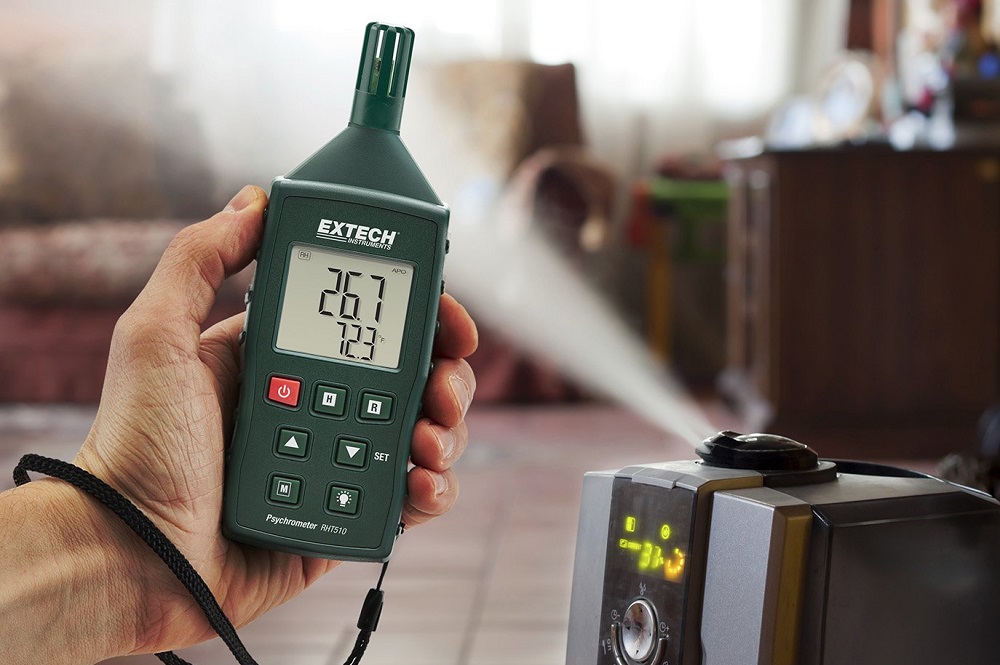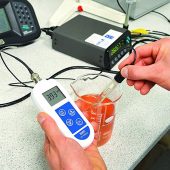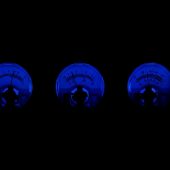A hygrometer is the best way to determine the humidity of a place. It’ll give you a precise figure such as 50%, if you are measuring relative humidity. But how to measure humidity without a hygrometer?
If you don’t have a hygrometer, there are a few ways you can measure or check humidity. They may, however, not be as accurate as a hygrometer.
Check Your Local Weather

Your favourite weather app will tell you much more than just the weather condition and temperatures of the day. Most apps also provide the relative humidity of a particular area, as well as dew point.
If you don’t have a weather app, simply search ‘weather in my location’ in Google. If you’ve enabled location in your browser, Google will return weather information for your area, including the relative humidity. If Google doesn’t get the location right, name the location when searching (e.g. weather in Bristol).
Use a Wet Bulb and Dry Bulb Thermometer
If you want a precise humidity measurement of a particular room, the best option is to measure the wet bulb thermometer.
You’ll need two mercury thermometers. Turn one of the thermometers into a wet bulb thermometer by taping moistened cotton wool around the bulb. Use room temperature water to moisten the cotton wool.
Leave the other thermometer as is. This will act as the dry bulb thermometer.
Place the two thermometers in front of a spinning fan and leave them for about five minutes. After five minutes, record the temperature difference between the two thermometers.
If you don’t have a fan, tape the two thermometers to a bottle and tie a string tightly to the bottle. Swing the bottle in the air for about a minute to get air moving over the wet and dry bulbs. Check the temperature difference between the two thermometers.
The bigger the temperature the difference, the drier the air (that is, the lower the humidity). To get an approximate percentage of relative humidity, use a conversion table or calculator like this one. Enter your dry bulb and wet bulb temperatures then click calculate to get the relative humidity.
For instance, a dry bulb temperature of 30C and a wet bulb temperature of 20C indicates an approximate relative humidity of 39%.
Tip: You can also buy a combined wet and dry bulb thermometer like this one that comes complete with tables for computing relative humidity.
Using Ice Cubes
You can usually tell how humid it is by how comfortable you feel. A humid day will feel muggy and sticky. A dry day will have your nostrils dry and irritated.
You can also use ice cubes to check how humid it is. Put a few ice cubes – 3 or 4 should do – in a glass of water and set the glass on a table. After 10 minutes check if there’s condensation on the sides of the glass.
Condensation forms when the air is humid. Water in the air settles onto the cold surface of the glass. If the sides of the glass are dry, it’s a sign there’s little humidity.
Obviously, the ice cube method doesn’t give precise values. It only gives you an idea of how humid the air is.
The Most Accurate Way to Measure Humidity
If you don’t need to know the exact level of humidity, either of the above methods will do.
Checking your local weather is the easiest and quickest option, using a dry and wet bulb thermometer lets you measure humidity in a particular space and the ice cube method is perfect if you need to know just the general level of humidity.
But if you want to know the precise level of humidity at any time of the day, we highly recommend buying a hygrometer. You can even get one that mounts on the wall for easy monitoring.
In addition to humidity, many hygrometers will also measure room temperature, and dew point.


